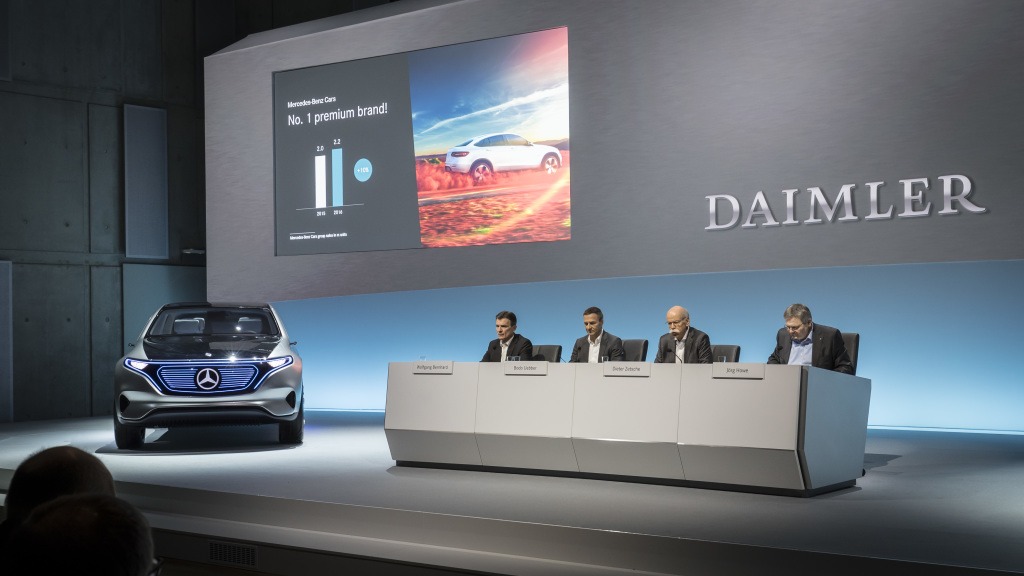Daimler brings forward its plans for electric vehicles and credits Tesla for improving their ‘granola image’
29 March 2017

29 March 2017
CEO Dieter Zetsche has announced at Daimler’s annual shareholders meeting that the carmaker has brought forward to 2022 its previous goal of introducing 10 new electric vehicles (EVs) to the market by 2025. The EVs will be marketed under the new EQ sub-brand. Zetsche has also recently credited Tesla with improving the ′granola image’ of EVs and says Tesla has opened the door for competitors such as EQ.
Zetsche’s comments about Tesla were made during an interview with German magazine T3N at the South by Southwest (SXSW 2017) conference in Austin, Texas. Daimler has previously invested in EV pioneer Tesla and launched the EQ sub-brand at the Paris motor show in September 2016. EQ also recently unveiled its first concept car, the EQC, which is due to go on sale in 2019.
Zetsche said ′Tesla has certainly set a positive impulse because they do not say electromobility is renunciation [of power] and about ′granola image’, but on the contrary: it is power and enthusiasm. And that is the right way.’
The granola image comment is in reference to the niche position that EVs have held in the car market, including Tesla models. Nevertheless, the limited-volume Tesla Roadster, which was launched in 2008, significantly improved the image of EVs and paved the way for the arrival of the higher-volume Tesla Model S in 2012. This halo effect undoubtedly also aided the wider adoption of mainstream EVs such as the Nissan Leaf.
At the height of the financial crisis in 2009, Daimler invested $50 million (€46 million) for a 9 percent stake in Tesla which it sold in 2014 for a healthy $780 million (€720 million). Tesla CEO Elon Musk has widely credited Daimler for saving Tesla at the time and Zetsche’s latest comments could be perceived as a reciprocal compliment. Zetsche said: ′The investment was relatively important for Tesla because they had some difficulties at the time to go to the next financing round. I believe the money that we have invested and the other investors that followed helped Tesla back then.’
Daimler says EQ is the flagship brand for the future of advanced, automated electric mobility. Its plans may have been accelerated not only by the emissions scandal and the success of Tesla in the luxury car market (and the phenomenal 400,000 pre-orders for its Tesla Model 3 compact car) but also because Daimler itself is now subject to emissions fraud investigations.
Daimler has previously announced that it expects battery electric vehicles to account for 15 to 25 percent of its vehicle sales by 2025. BMW has a similar target but this also includes plug-in hybrids whereas Daimler sees more potential for pure battery electric vehicles.
Although Daimler has also developed fuel cell technology and is ahead of most OEMs in this regard, Zetsche conceded at a congress hosted by German magazine Auto Motor und Sport in Stuttgart on Monday that: ′The battery costs are coming down quickly, but on the hydrogen side the production of the fuel is still expensive.’ This could imply that Daimler’s fuel cell plans may now be on the back-burner for a while, especially now they have brought forward their EV plans.
Photograph courtesy of Daimler